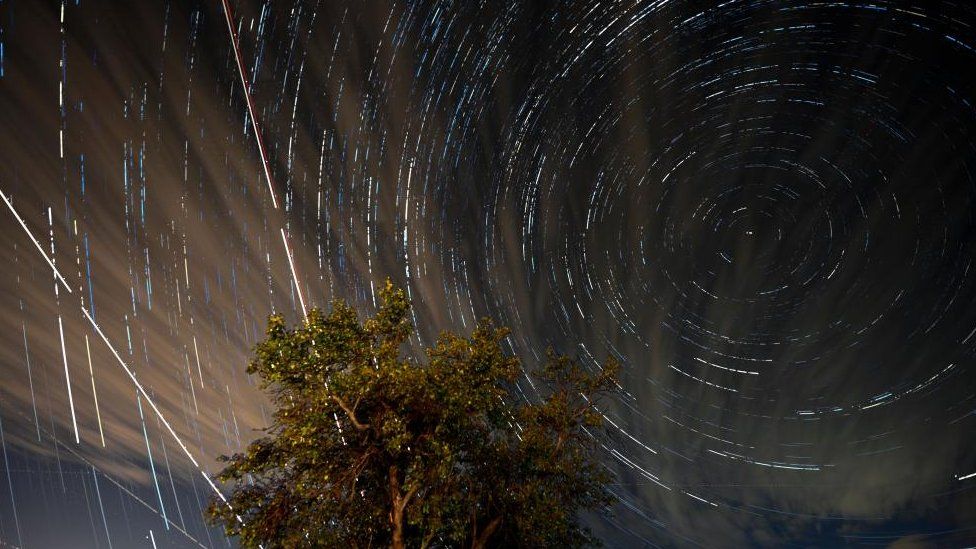Stargazers are in for a treat on Saturday night as the Perseid meteor shower lights up the sky.
The phenomenon brings up to dozens of meteors an hour, created when debris from comet 109P/Swift-Tuttle collides with the Earth’s atmosphere and burns up.
This year the event is peaking during the night of 12 August, into the early hours of 13 August.
In this period, up to 100 shooting stars an hour could be visible.
The natural display happens at a similar time in July and August each year, and can be seen around the globe – although is believed to be clearer in the northern hemisphere.
The meteors – which can be as small as a grain of sand or as big as a pea – hit the Earth’s atmosphere at speeds of 134,000 mph (215,000 km/h) and heat up, resulting in the bright flashes which can be seen with the naked eye. The blazing debris does not pose any danger to us on Earth.
It is considered one of the best astronomical events because it produces bright meteors and is one of the most active.
In the UK, people in the north Midlands, the east, and north east England will have the clearest conditions overnight, with people east of the Pennines having some of the best odds of seeing the shower.
Elsewhere, in south west and north west England, things are going to be patchier, with scattered showers – although skies are expected to clear sporadically.
“A few clear spells are possible elsewhere across the UK too, but parts of west Britain, particularly the coasts and hills, will see the cloudiest conditions due to the south-westerly breeze,” said BBC Weather’s Billy Payne.
He estimates that people in Northern Ireland have a roughly 60% chance of seeing the meteor display, and people in east Scotland have a roughly 50% of a viewing, but this drops to 40% for people in Wales.



This year, Nasa’s All Sky Fireball Network, which observes meteors using a network of cameras, detected the first Perseid meteor of the year on 26 July.
According to the organisation, all that is needed to see the meteors is “clear sky, darkness, and a bit of patience”, adding the meteors should be visible in all directions across the sky.
It is called a ‘Perseid’ meteor shower because the meteors appear to originate from the constellation of Perseus – named after a figure from Greek mythology.
There is also a high chance of seeing fireballs, which are very bright meteors, as well as meteors with long trains.
According to the Royal Astronomical Society, meteor showers are easy to watch and no special equipment is needed.
Related Topics
- Astronomy
- Meteorites
